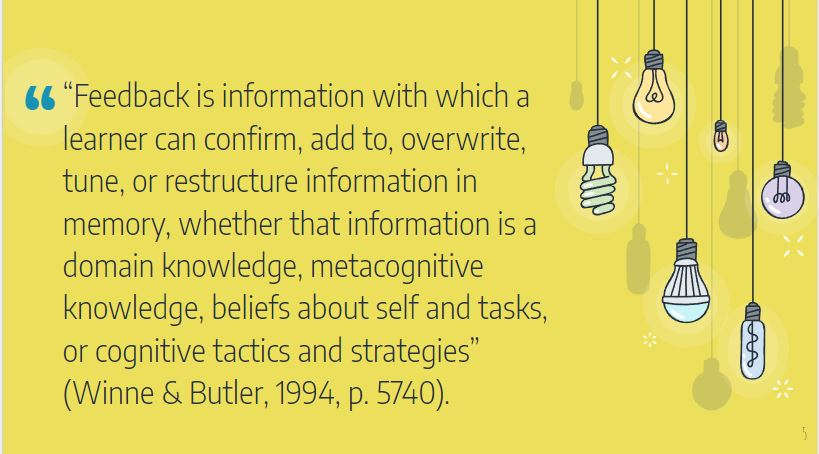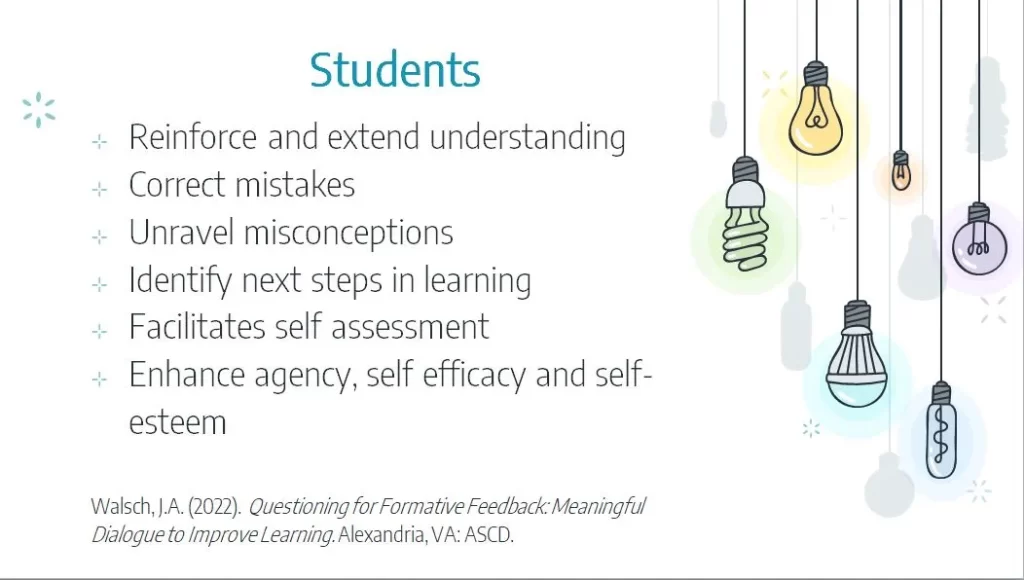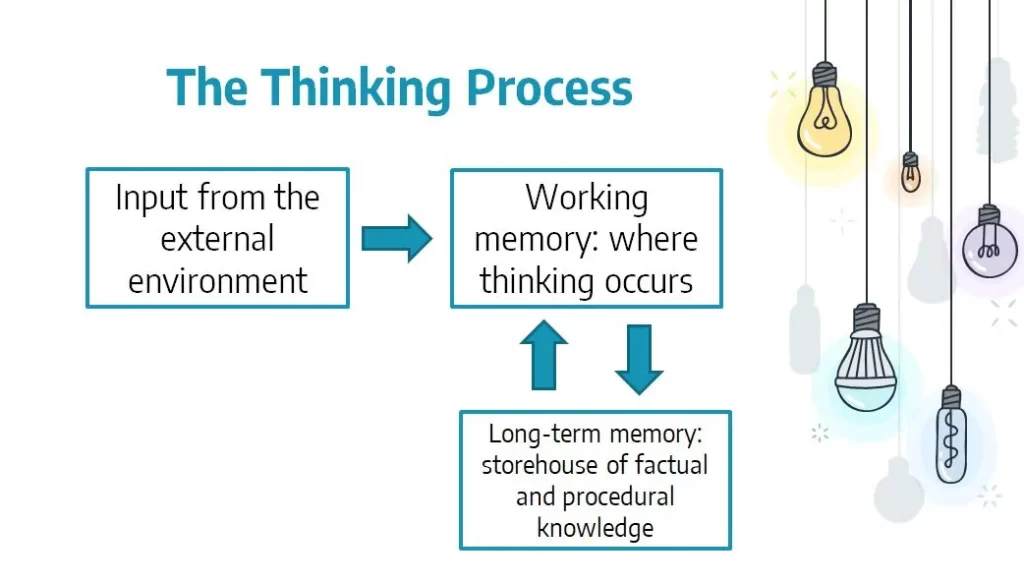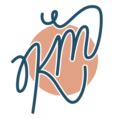Recently I conducted a professional development session to K-8 teachers on the topic of providing effective formative feedback. Using Mentimeter, I asked the question “What adjectives would you use to describe the word feedback?”. The #1 adjective that emerged from the responses was the word ‘helpful’, followed by ‘useful’ and ‘positive‘. Formative feedback teachers provide should be helpful, useful, positive, informative and timely. And contribute to learner growth! Here is an insightful definition of feedback from Winne & Butler (1994) that is worth reflecting on:

Feedback is a process
During the session I was guiding teachers to see feedback as a dynamic, reciprocal and cyclical process that is based on dialogue between the teacher and the learner (Walsch, 2022). The teacher can initiate the dialogue by simply using questions like ‘Why?’ or ‘What makes you say that?’, then add on by asking a few thoughtfully pre-planned questions that activate and extend student thinking. When these questions align with the learning goal and meet the needs of the learner, the end result is a more effective feedback process (Walsch, 2022). The goal of this dialogue for both teacher and student is to gain information. Here is what the student and the teacher can use that information for:


Importance of wait time
I asked the session participants to raise their hand if they are guilty of asking their students a question and then immediately calling on the first student that raises their hand. Yes, we all do it! However, research shows that initiating a brief pause called ‘wait time’ or ‘ think time’ after asking a question leads to not only a greater number of student responses, but better quality responses indicating higher-level student thinking (Walsch, 2022). The thinking process takes time! Have you tried to recall something that was buried way back in your long-term memory? It takes a while to retrieve it! Take a look:

Questioning to extend student thinking
After allowing for think time and hearing the student responses, we proceed with the dialogic nature of the feedback process and ask follow-up questions. These questions extend student thinking. They could be pre-planned or ones that have organically emerged during the lesson.
At this point the students may have questions for us and that is part of the dialogue as well. Encourage them to ask their questions and offer guidance or clarification. And that is how the cycle of dynamic, reciprocal and dialogic feedback keeps going! As teachers we want to know how every learner is progressing in our class. How do we ensure that we receive feedback from everyone? What easy strategies can we use? How can technology assist us in this?
Stay tuned for Part 2 where I discuss tips on how to elicit responses from every learner in the class!
References:
Walsch, J.A. (2022). Questioning for formative feedback: meaningful dialogue to improve learning. Alexandria, VA: ASCD.
Winne, P.H. & Butler, D. L. (1994). Student cognition in learning from teaching. In T. Husen & T. N. Postlethwaite (Eds.), International encyclopedia of education (2nd ed., pp. 5738-5745). Pergamon.

